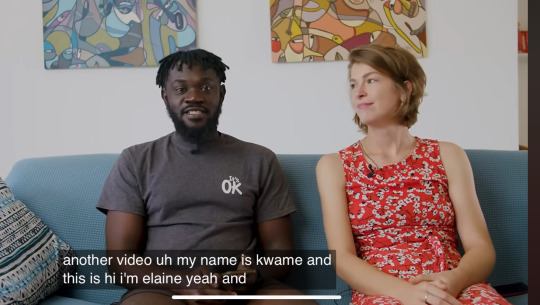Don't wanna be here? Send us removal request.
Text
Intercultural Dating in a Globalized World: Perception and Personal Growth
By: Group 5 – Putri Eka Solehudin, Alya Nur Tiana, & Cindy Winda Mareta.
In today’s globalized world , intercultural relationships have become increasingly frequent due to immigrant movement, studying abroad, and interaction through digital platforms (Chen, 2010). Intercultural relationships exist between individuals from different cultural backgrounds who may relate intimately, socially, or professionally. However, they also mean navigating the intricacies of cultural expectations regarding communication styles, gender roles, family involvement, and expression of emotions (Bustamante et al., 2011).
Intentionality in communication and awareness of culture are important for development and maintenance. Although it is said that love conquers all, in reality such relationships require constant negotiation of meaning, norms, and expectations. Cooperation in communication, empathy, and adaptability are additional efforts needed to break these barriers (Martin & Nakayama 2010). Therefore, it discusses how these intercultural relationships develop, what the couple has to face in stark contrast, and how understanding can be developed around cultural boundaries.
Video Analyzed
“How Cultural Differences Affect Our Relationship”
Watch the full video here

This video features interracial couple talking about daily life events and cultural differences. Their relationship dynamics built by both different backgrounds, an example would be the American and the Asian or African partner-reveal how people develop their relationships.
Observed Themes & Behaviors.
1. Cultural Practices & Assumptions
They try each other’s traditional foods and face different taste expectations. These moments show how shared experience leads to deeper understanding.
2. Non-Verbal Norms
Differences usually emphasize the understanding of non-verbal cues such as eye contact, public displays of affection, and tone of voice.
3. Language Use & Expressions
Consequently, it poses cultural influences in the way he consumes or communicates affection. What one culture claims so romantically or respectfully would seem very formal or awkward to another culture.
4. Turning Points in Communication
The couple identifies several communication breakdowns and how they make up for them, such as misinterpretations caused by tone or body language.
Intercultural Relationship Concepts in Practice:
• Similarity–Difference Dialectic.
They talk about all those things that they share (for instance, respect, loyalty, love) and show that among those shared values are food, social expectations, and communication norms.
• Communication Competence.
They learn empathy, active listening, and adaptability-these were the most essential elements for intercultural competence-by the time they reach misunderstandings.
• Identity Negotiation
In the process, both adjust their expectations and behaviours without compromising their cultural identities, which contributes to the understanding of identity as co-constructed in relationships.
What This Video Teaches Us.
Through their story and honesty, this couple shows us:
How cultural identity shapes love;
That patience and openness are essential;
That YouTube (and social media) can be powerful platforms for cultural dialogue.
Conclusion.
In a world shaped by globalization and digital platforms, intercultural relationships now not only becoming even more widespread, become more significant at the same time. The video analysis demonstrates that love and communication as well as empathy can transcend even the widest cultural divides.
With an open to growth mindset and willingness to learn, intercultural love is possible and thus inspiring, as illustrated by couples like Kwame and Elaine, who build a "third" culture.
References
Bustamante, R. M., Nelson, J. A., Henriksen Jr, R. C., & Monakes, S. (2011). Intercultural couples: Coping with culture-related stressors. The Family Journal.
Chen, G. M. (2010). A model of global communication competence. China Media Research.
Martin, J. N., & Nakayama, T. K. (2010). Intercultural Communication in Contexts (5th ed.). McGraw-Hill.
Rai Technology University. (2019). Intercultural Communication. India: Rai Technology University.
This post is part of the final project of the Intercultural Communication course.
#LoveAcrossCultures#InterculturalRelationship#CulturalDifferences#VideoAnalysis#Intercultural Communication
4 notes
·
View notes